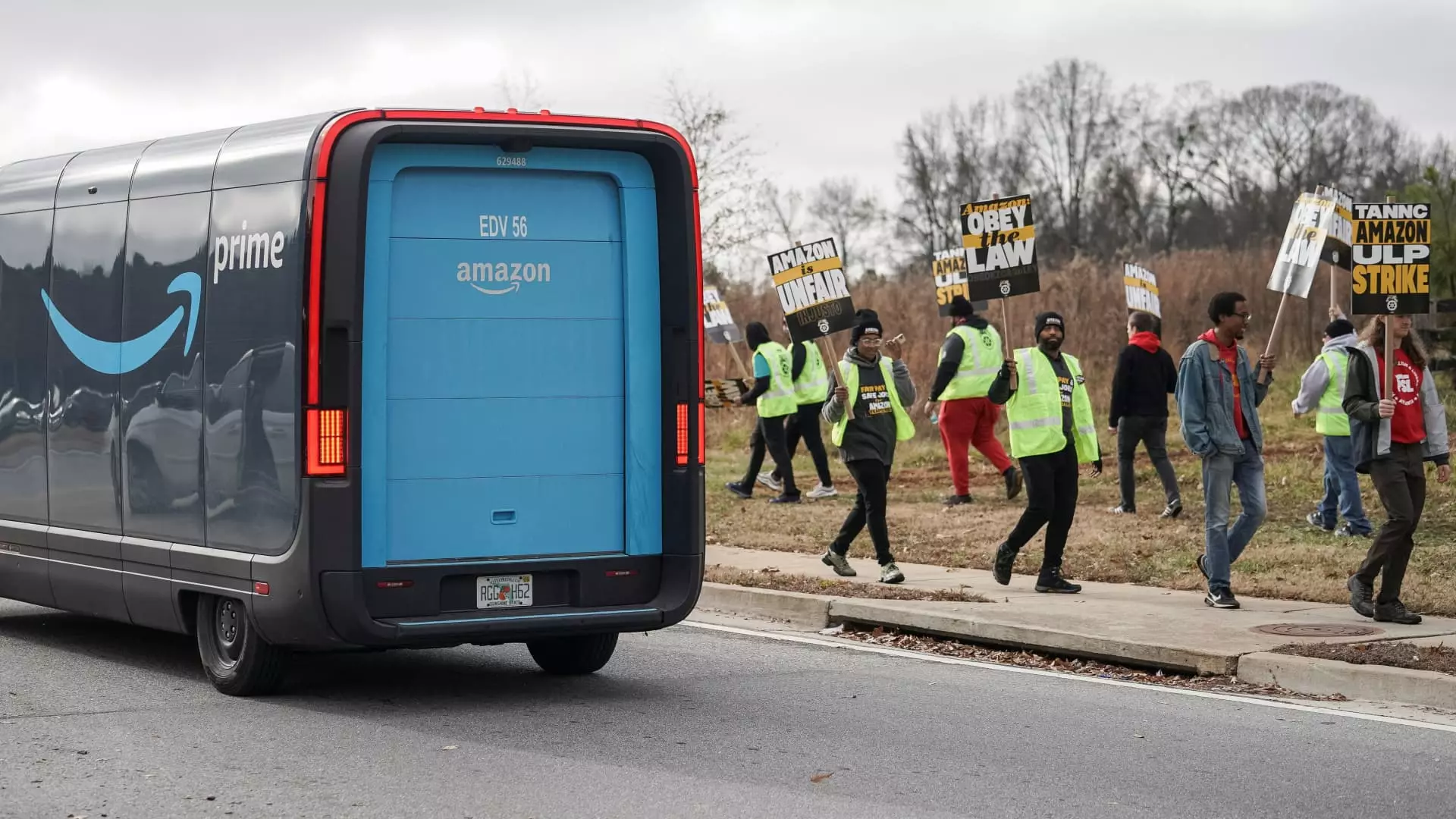On a Thursday that underscored rising tensions in the gig economy, Amazon workers from multiple facilities across states such as New York, Georgia, California, and Illinois organized a significant strike. Their goal: to demand improved benefits, higher wages, and safer working conditions in a company that has faced increasing scrutiny over its labor practices. The strike, orchestrated by the Teamsters union, symbolizes more than just a single day of protest; it marks a pivotal moment in the ongoing struggle between labor and corporate greed, especially as the holiday shopping season approaches—a time when the pressure on workers typically intensifies.
The Teamsters union had set a clear ultimatum to Amazon, seeking negotiations for a new contract and aiming to compel the company to heed their demands. With a deadline looming, the strike served as a strategic maneuver to disrupt Amazon’s operations during its most profitable season, capturing public attention. Teamsters President Sean O’Brien did not mince words, attributing potential holiday delivery delays to “Amazon’s insatiable greed.” This statement not only aims to rally support for the workers but also shifts public sentiment towards the ethical considerations of corporate behavior during critical retail periods.
In contrast, Amazon’s communications reflected a dismissive stance towards the union’s claims. The company contended that the Teamsters had presented a misleading narrative, suggesting that the demonstrators present were primarily outsiders rather than actual employees. This defensive position raises questions about Amazon’s transparency regarding worker representation and its efforts to cooperate with union endeavors. By framing the striking workers as external agitators, Amazon attempts to undermine the legitimacy of the protests, while simultaneously assuring customers that their holiday orders remain a priority.
Despite the efforts from unions to organize and unite Amazon’s workforce, statistics paint a stark picture. With the Teamsters claiming around 10,000 members from a total workforce of 1.53 million, their presence represents a fraction of Amazon’s global employee base. This number raises concerns about the strength and influence of collective bargaining at such a vast corporation. Although this strike is heralded as the largest against Amazon in American history, the reality of representing a minuscule percentage of workers casts doubt on its long-term efficacy.
The fight for unionization within Amazon is not new; it exemplifies a broader labor movement gaining momentum across various industries. Following a notable victory in 2022 when Staten Island warehouse workers voted to unionize, other employees have been emboldened to pursue similar paths. However, Amazon’s robust anti-union strategies have led to an ongoing battle that highlights the complexities of modern labor relations. As unions like the Amazon Labor Union struggle to achieve progress, their affiliation with established bodies like the Teamsters reveals an evolving strategy to consolidate power amidst corporate resistance.
The strike by Amazon workers marks a significant chapter in the current labor landscape, where the push for better working conditions stands against a backdrop of corporate immensity and complexity. The unfolding events reaffirm that the worker’s voice, however small, carries weight—especially as they seek justice in an economic structure increasingly characterized by inequality. As pressures mount from both sides, the outcome will likely have lasting implications for labor relations and corporate responsibility moving forward.

